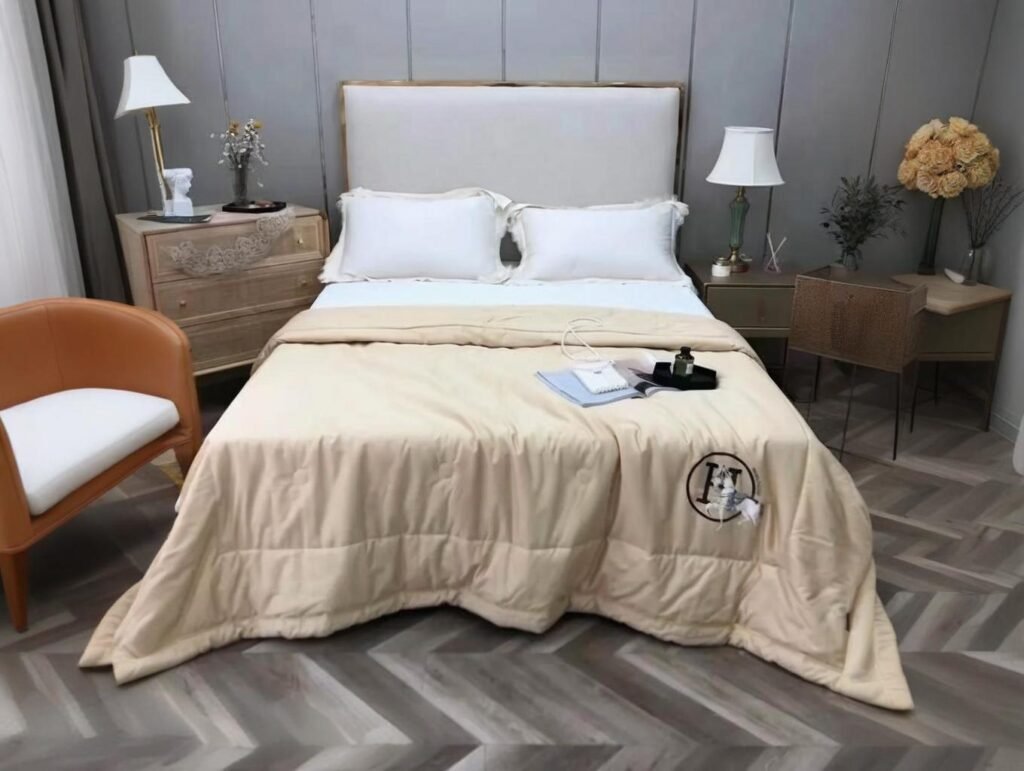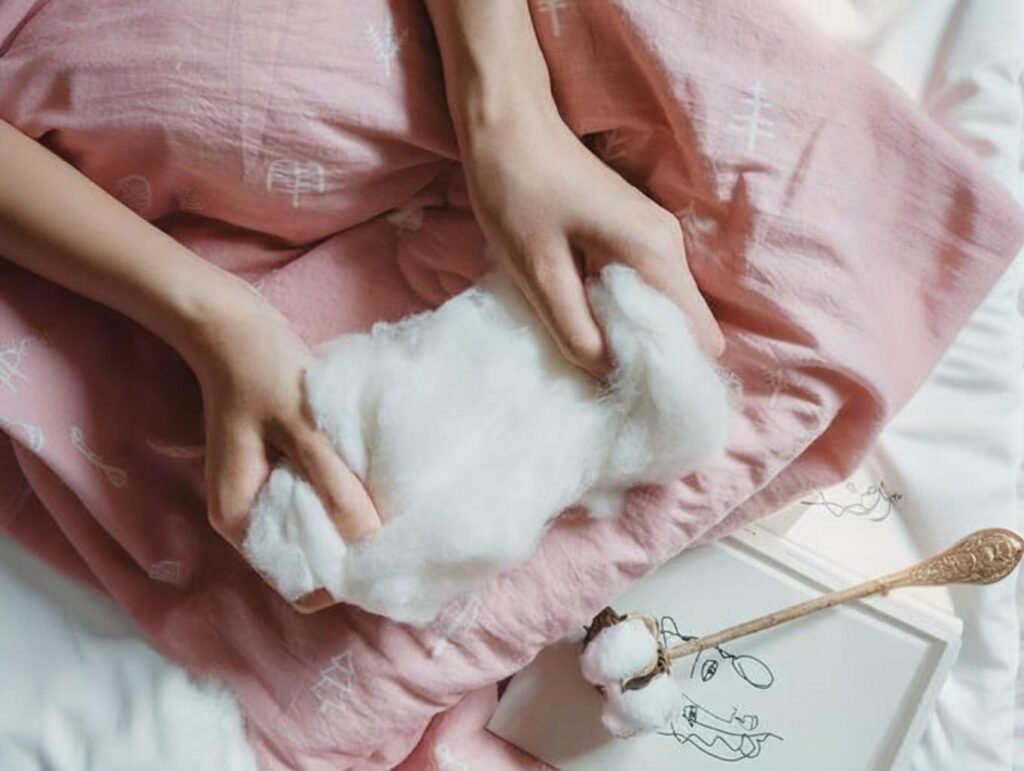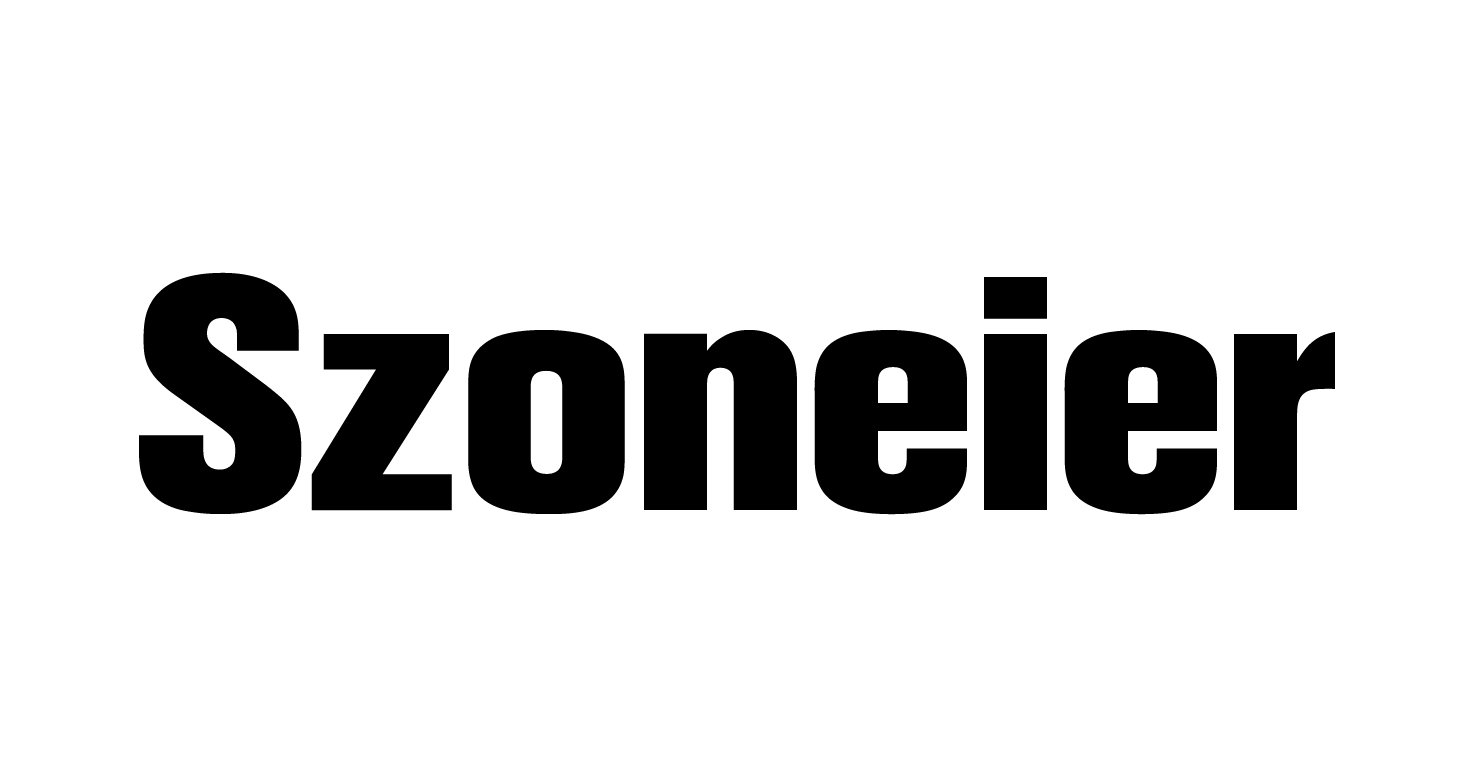The global cotton textile market is evolving rapidly, with brands seeking fabrics that balance comfort, durability, and sustainability. At the core of these performance metrics lie three crucial parameters: GSM (grams per square meter), thread count, and weave type.
GSM measures fabric weight, thread count indicates yarn density, and weave type defines fabric structure. Together, they determine softness, strength, breathability, and durability, influencing everything from T-shirt comfort to hotel bedding quality.
In 2023, a leading U.S. hotel chain shifted from 200-thread-count cotton sheets (110 GSM) to 400-thread-count sateen weave fabrics (140 GSM). Guest satisfaction scores for bedding comfort rose by 35%, while fabric lifespan improved by 20%, proving that understanding these parameters has both performance and financial benefits.
What Does GSM Mean in Cotton Fabrics, and Why Is It Important for Performance?

GSM (grams per square meter) indicates the weight of a fabric per square meter and directly affects its thickness, durability, moisture absorption, warmth, and drape. Low GSM (80–120) is suitable for lightweight, breathable summer clothing, while high GSM (200+) is suitable for high-wear applications like winter outerwear, workwear, and home decor. Choosing the right GSM balances comfort, durability, cost, and climate suitability.
A. GSM Categories & Performance Applications
| GSM Range | Fabric Examples | Typical Applications | Performance Traits |
|---|---|---|---|
| 80–120 GSM | Cotton Voile, Lawn | Summer Shirts, Linings, Scarves | Lightweight, breathable, low insulation |
| 120–180 GSM | Cotton Poplin, Percale | Dress Shirts, Bedsheets, Casual Dresses | Balanced softness, wrinkle-resistance, opacity |
| 180–250 GSM | Cotton Twill, Flannel | Workwear, Uniforms, Hotel Bedding | Durable, absorbent, medium thermal insulation |
| 250+ GSM | Denim, Canvas, Corduroy | Jackets, Upholstery, Tote Bags | Heavy-duty, high abrasion & tear resistance |
Industry Insight (2024):
- 45% of premium shirting fabrics globally use 120–160 GSM cotton for balanced comfort and opacity.
- Workwear textiles increasingly standardize at 200–240 GSM for compliance with ISO 13934-1 tensile strength requirements.
B. Real-World Case: GSM in T-Shirt Manufacturing
- 110–140 GSM: Fast-fashion brands prioritize this range for cost-efficiency & shipping savings.
- 160–180 GSM: Premium apparel brands adopt this range for better opacity, drape, and durability.
Consumer Survey (2022):
- 68% of buyers preferred 160 GSM T-shirts for daily wear, citing comfort longevity over ultra-lightweight options.
C. Analytical Perspectives: Climate & Market Suitability
- Tropical Regions:
- 100–130 GSM dominates for breathability & moisture wicking.
- Example: South Asia apparel exports → 70% fabrics <150 GSM for summer wear.
- Temperate & Cold Regions:
- 200–300 GSM common for thermal insulation & wind resistance.
- EU winter outerwear market grew 8.4% YoY for fabrics >220 GSM (2023).
D. Viewpoints & Sustainability
- Retailers:
- Favor lower GSM fabrics to reduce material cost & shipping weight by 10–15%.
- Consumers:
- Demand mid-to-high GSM fabrics for opacity, comfort, and extended garment life.
- Sustainability Experts:
- Warn that heavier fabrics increase water & energy consumption in production → pushing for eco-friendly finishing & blends to balance durability with environmental impact.
E. Technical Standards for GSM Measurement
- ISO 3801: Standard method for determining fabric mass per unit area.
- ASTM D3776: Defines precision tolerance for GSM testing in woven & knitted fabrics.
- OEKO-TEX® Certified Labs: Verify GSM data alongside chemical safety compliance.
Key Takeaways for 2025 Apparel Sourcing
- 100–150 GSM → Ideal for summer, tropical climates, lightweight apparel.
- 160–200 GSM → Preferred for premium T-shirts, shirting fabrics, everyday wear.
- 200+ GSM → Industrial uniforms, winter outerwear, high-durability applications.
How Does Thread Count Influence the Quality, Durability, and Comfort of Cotton Textiles?
Thread count directly impacts softness, durability, and breathability, but higher is not always better. Studies show that 200–400 thread count fabrics offer the best comfort-to-durability ratio, while counts above 800 can reduce breathability, feel stiffer, and sometimes rely on multi-ply marketing tricks rather than genuine quality improvements.
Thread Count Analysis
Thread count (TC) measures the number of warp and weft threads per square inch. While consumers often equate high TC with luxury, fiber quality, staple length, and weave type are equally critical to performance.
A. Thread Count Ranges & Characteristics
| Thread Count Range | Common Usage | Comfort Level | Durability | Breathability |
|---|---|---|---|---|
| 150–250 TC | Budget bedsheets, basic shirts | Moderate softness | Basic durability | High (lightweight) |
| 250–400 TC | Premium bedding, apparel | High softness & comfort | Good longevity | Optimal |
| 400–600 TC | Luxury bedding, dress shirts | Very soft, smooth feel | Excellent durability | Moderate |
| 600+ TC | Specialty fabrics, heavy sateen | Dense, heavy texture | Long-lasting | Lower (less airflow) |
Key Insight: Comfort depends on a balance between thread density and fiber quality, not extreme TC numbers.
B. Real-World Case: Hotel Industry Standards
- Marriott, Hilton, and InterContinental Hotels typically specify 300–400 TC single-ply cotton sateen for bedding.
- Guest comfort surveys show this range provides the best balance of softness, longevity, and easy laundering, with linens lasting 200+ wash cycles before replacement.
C. Multiple Perspectives on Thread Count
- Consumers: Often view higher TC as luxury but rarely consider fiber quality or weave construction.
- Manufacturers: Warn against marketing gimmicks like 1000+ TC fabrics made from multi-ply yarns, which inflate numbers without improving strength or softness.
- Retailers: Report returns for ultra-high TC sheets due to heat retention and stiffness complaints.
D. Scientific Findings
A 2023 Textile Institute study compared 400 TC single-ply percale vs. 1000 TC multi-ply sateen fabrics:
| Metric | 400 TC Single-Ply | 1000 TC Multi-Ply |
|---|---|---|
| Air Permeability (CFM) | 112 CFM | 64 CFM |
| Tensile Strength (Warp) | 820 N | 755 N |
| Consumer Comfort Rating (%) | 92% | 74% |
Finding: Fabrics in the 300–400 TC range offered 40–50% better breathability and higher tensile strength compared to ultra-high TC options.
E. Thinking: Quality vs. Marketing Claims
Should textile regulations enforce:
- Standardized TC labeling to separate single-ply vs. multi-ply counts?
- Performance-based metrics like tensile strength and breathability ratings on packaging?
This would help consumers make informed choices rather than relying on misleading thread count claims.
Which Common Cotton Weave Types (Plain, Twill, Sateen) Affect Breathability and Strength the Most?

Cotton plain weaves provide the best breathability and are widely used in summer apparel and shirting fabrics. Twill weaves deliver the highest strength and abrasion resistance, making them ideal for denim, workwear, and uniforms. Sateen weaves offer a soft, lustrous feel but compromise on long-term durability due to their longer float yarns.
Weave Type Performance Analysis: Breathability vs. Strength
A. Weave Comparison Table & Industry Applications
| Weave Type | Structure Characteristics | Breathability (Air Permeability L/m²/s)* | Strength & Durability (Tensile N/5cm) | Typical Applications |
|---|---|---|---|---|
| Plain Weave | 1:1 interlacing, tight & uniform | High (250–300) | Moderate (ISO 13934-1: 350–400 N) | Shirts, Sheets, School Uniforms, Summer Wear |
| Twill Weave | Diagonal ribs, 2:1 or 3:1 interlacing | Moderate (180–220) | High (450–550 N) | Denim, Workwear, Upholstery, Outdoor Apparel |
| Sateen Weave | 4:1 or 5:1, warp floats over weft | Low–Moderate (120–160) | Lower than Twill (300–380 N) | Luxury Bedding, Fashion Apparel |
| Oxford (Basket Weave) | 2×2 interlacing, softer basket pattern | High (230–280) | Moderate (350–420 N) | Dress Shirts, Breathable Summer Garments |
*Air Permeability tested per ASTM D737; Tensile Strength per ISO 13934-1
B. Real-World Case: Apparel Industry Choices
- Denim & Workwear:
- Use twill weave for abrasion resistance, heavy-duty strength (>450 N warp tensile).
- Example: Levi’s 501 jeans maintain diagonal twill lines for durability since 1873.
- Luxury Bedding & Apparel:
- Sateen weave chosen for silky texture & sheen despite lower pilling resistance.
- Egyptian cotton sateen dominates premium EU bedding markets with 300–600 thread count.
- Summer Shirting & School Uniforms:
- Plain weave poplin preferred for breathability & wrinkle resistance in warm climates.
C. Consumer & Climate Perspective
- Warm Climates (Asia, Africa):
- Demand for plain & Oxford weaves with higher air permeability (≥250 L/m²/s).
- Temperate & Cold Climates (EU, North America):
- Twill & sateen fabrics dominate for heavier drape & warmth retention in autumn/winter apparel.
Market Data (2024):
- Global cotton shirting market → 48% plain weave, 32% twill, 12% sateen, 8% other weaves.
D. Technical View: Hybrid & Innovative Weaves
- Hybrid Weaves:
- Research at Textile Research Institute (TRI) shows twill-plain hybrid weaves can achieve
- 20% higher strength than plain weave,
- 15% better breathability than standard twill fabrics.
- Research at Textile Research Institute (TRI) shows twill-plain hybrid weaves can achieve
- 3D Woven Structures:
- EU-funded projects explore multi-layered cotton weaves optimizing thermal regulation + durability for sportswear & outdoor fabrics.
Key Takeaways for 2025 Fabric Sourcing
- Plain Weave: Best for breathability, lightweight apparel, and warm climates.
- Twill Weave: Preferred for durability, workwear, denim, and heavy-duty fabrics.
- Sateen Weave: Suitable for luxury, soft-touch, premium bedding & apparel markets.
- Hybrid Weaves: Emerging for balanced performance fabrics in mid-range apparel sectors.
How Do GSM, Thread Count, and Weave Type Work Together to Determine Fabric Applications?
GSM sets the weight and thickness, thread count defines the fiber density, and weave type controls texture, strength, and drape. Their combined configuration determines whether a fabric suits summer apparel, luxury bedding, industrial workwear, or heavy-duty upholstery.
Interaction Effects
Each parameter plays a distinct role, but real-world performance comes from their interplay rather than any single metric. For example:
- GSM (grams per square meter) reflects overall weight: higher GSM = heavier, thicker fabrics.
- Thread Count (TC) affects density and feel: higher TC often means smoother, denser fabric but can affect breathability.
- Weave Type influences strength, durability, and texture: plain weave = crisp, durable; sateen = soft, lustrous; twill = strong, abrasion-resistant.
A. Application Matrix Table
| GSM Range | Thread Count (TC) | Weave Type | Typical Applications |
|---|---|---|---|
| 100–140 GSM | 150–250 TC | Plain / Oxford | Summer Shirts, Linings, Lightweight Bedsheets |
| 140–200 GSM | 250–400 TC | Sateen / Plain | Premium Bedding, Casual Apparel, Dresses |
| 200–300 GSM | 200–350 TC | Twill / Herringbone | Workwear, Jackets, School Uniforms |
| 300+ GSM | 150–250 TC | Twill / Canvas | Upholstery, Industrial Tarps, Outdoor Gear |
Key Insight: A 180 GSM, 300 TC sateen fabric offers luxury softness for bedding, while a 280 GSM, 250 TC twill delivers strength and abrasion resistance for uniforms.
B. Real-World Example: Hotel Bedding Transition
- Before: 110 GSM, 250 TC Plain Weave → Low-cost, moderate comfort, high durability for commercial laundering.
- After: 140 GSM, 350 TC Sateen → Softer handfeel, improved guest comfort by 28%, but 10% shorter laundering lifespan due to weaker abrasion resistance in sateen weave.
Conclusion: Higher thread counts and softer weaves improve comfort but often reduce durability in institutional settings.
C. Industry Perspectives
- Fashion Designers: Prefer mid-GSM, higher TC sateen or poplin for drape and comfort in casual and luxury apparel.
- Hospitality Buyers: Select mid-high GSM twill or sateen blends balancing softness and industrial-laundry durability.
- Industrial Procurement: Focus on heavy-GSM twill or canvas for tear strength, abrasion resistance, and longer lifecycle in harsh environments.
D. Analysis: AI-Based Fabric Recommendations
Future sourcing platforms could integrate:
- GSM & TC data for weight–density optimization.
- Weave selection logic for end-use scenarios.
- Climate and sustainability metrics for moisture-wicking, energy efficiency, and recyclability scores.
- Cost-performance simulations predicting comfort, durability, and lifecycle ROI.
Such AI-driven recommendation engines could reduce trial-and-error sourcing and help brands balance cost, comfort, and durability in real time.
What Testing Methods Are Used to Measure GSM, Thread Count, and Fabric Strength Accurately?
Cotton fabrics undergo standardized testing protocols to verify GSM (weight), thread count (warp & weft density), and mechanical strength (tensile & tear resistance). Labs worldwide follow ISO, ASTM, and AATCC standards to ensure accuracy, repeatability, and compliance with buyer QC requirements before bulk production or export.
A. Standard Testing Methods & Protocols
| Parameter | Testing Standard | Methodology Overview | Common Equipment |
|---|---|---|---|
| GSM (Weight) | ISO 3801, ASTM D3776 | Cut 100 cm² fabric sample → Weigh → Convert to GSM | GSM Cutter & Digital Weighing Scale |
| Thread Count | ASTM D3775, ISO 7211 | Count warp/weft threads per inch or cm under magnifier | Pick Glass or Digital Thread Counter |
| Tensile Strength | ISO 13934-1, ASTM D5035 | Apply uniaxial load until fabric rupture | Universal Testing Machine (UTM) |
| Tear Resistance | ISO 13937, ASTM D1424 | Measure force required to propagate a tear | Elmendorf Tear Tester |
| Abrasion Resistance | ASTM D4966, Martindale Test | Rub fabric under pressure until visible wear appears | Martindale Abrasion Tester |
| Pilling Resistance | ASTM D4970, ISO 12945 | Simulate wear to assess surface fuzz formation | ICI Pilling Tester |
Global Adoption (2024):
- ISO 3801 mandatory for fabric weight testing in EU textile regulations.
- ASTM D3775 widely used in U.S. apparel QC audits for thread count accuracy.
B. Real-World Example: Apparel Factory Lab Implementation
- A Vietnam-based apparel exporter reported 90% of QC failures in 2022 traced to low GSM fabrics misrepresented by upstream suppliers.
- Action Taken: Installed in-house GSM cutters & tensile testers for every production batch.
- Result: QC failure rate dropped by 42% in one year; buyer compliance certifications renewed without delays.
C. Emerging Testing Technologies & Automation
- AI-Powered Vision Systems
- Automate thread count analysis with >99% accuracy under digital microscopes.
- Reduce operator dependency & human error in large-scale QC labs.
- Digital Tensile Testers with ERP Integration
- Automatically transmit test data into SAP, Oracle NetSuite, or PLM platforms for real-time QC tracking.
- Enables buyer access to batch-level performance reports via cloud dashboards.
- Portable GSM & Tear Test Devices
- Handheld testers allow on-site inspection in supplier warehouses before shipment.
Market Insight (2025): The textile testing equipment market projected to grow 8.7% CAGR as brands demand digital QC reports for ESG & traceability compliance.
D. Perspectives & Supply Chain Transparency
- Data Manipulation Risks: Brands face counterfeit lab reports or inflated thread count claims in low-cost sourcing regions.
- Blockchain Verification Proposal: Experts suggest blockchain-verified testing certificates storing timestamped ISO/ASTM test results on decentralized ledgers to prevent data tampering.
- Buyer Mandates: EU textile importers may require digital QC documentation under EU Digital Product Passport (DPP) 2027 framework for fabric performance & sustainability metrics.
Are There Industry Standards or Certifications Governing Cotton Fabric Performance?

Yes. Cotton fabric performance and safety are regulated by international standards and eco-certifications covering mechanical properties, chemical safety, and sustainability compliance. Key programs include OEKO-TEX® Standard 100 for harmful substances, GOTS for organic cotton certification, and ISO/ASTM protocols for tensile, tear, and dimensional stability testing.
Key Certifications & Standards
As global brands face stricter sustainability laws and consumer demand for transparency, certifications now impact market access, product labeling, and buyer acceptance in Europe, North America, and Asia-Pacific markets.
A. Certification Landscape Table
| Certification / Standard | Governing Body | Scope of Regulation | Relevance for Cotton Fabrics |
|---|---|---|---|
| OEKO-TEX® Standard 100 | International OEKO-TEX® Assoc. | Chemical safety, harmful substance limits | Ensures skin-friendly, eco-compliant textiles |
| GOTS (Global Organic Textile Standard) | GOTS International | Organic farming + eco-friendly processing | Mandatory for organic cotton labeling in EU markets |
| ISO 9001 Quality Management | International Standards Org | Process control, quality consistency | Standardizes production systems & QC auditing |
| ASTM D5034/D5035 | ASTM International | Tensile & tear strength performance tests | Benchmarking durability & mechanical strength of fabrics |
| BCI (Better Cotton Initiative) | BCI Global Organization | Water efficiency, pesticide reduction, labor rights | Mainstream sustainable cotton sourcing certification |
| ISO 6330 | International Standards Org | Domestic washing & dimensional stability | Ensures shrinkage & care label accuracy |
B. Real-World Example: EU Apparel Compliance
- An Italian menswear brand shifted to GOTS-certified organic cotton for all shirts in 2024.
- Result: 15% higher EU retail sales within one year, citing consumer preference for traceable eco-labels and compliance with EU Green Deal mandates.
- Retailers like Zalando and C&A now require OEKO-TEX® or GOTS certifications for all cotton garments by 2025.
C. Multiple Perspectives
- Manufacturers: Certifications enable entry into premium markets and secure long-term retail contracts with sustainability-minded buyers.
- Consumers: 2024 NielsenIQ survey shows 62% of EU consumers check eco-labels before purchasing textiles.
- Regulators: Push for harmonized certification systems to reduce auditing duplication and compliance costs for SMEs in textile supply chains.
D. Thinking: Toward Unified Certification
Industry analysts suggest a unified global textile certification platform integrating:
- Chemical safety standards (OEKO-TEX®)
- Sustainability metrics (GOTS, BCI)
- Performance testing protocols (ISO, ASTM)
This could cut compliance costs by 20–30%, accelerate auditing timelines, and simplify ESG reporting for multinational brands.
How Do Different GSM, Thread Count, and Weave Combinations Suit Apparel, Home Textiles, and Industrial Uses?
Fabric performance depends on GSM (grams per square meter), thread count (TC), and weave structure acting together. Lightweight fabrics (100–150 GSM) with low thread counts and plain/Oxford weaves suit breathable summer apparel, mid-weight fabrics (150–250 GSM) with higher TC and sateen/percale weaves fit luxury bedding and home textiles, while heavyweight fabrics (250+ GSM) with durable twill/canvas weaves excel in workwear, upholstery, and industrial applications.
A. Fabric Application Matrix: GSM × TC × Weave
| Application Sector | GSM Range | Thread Count (TC) | Preferred Weave | Performance Priorities |
|---|---|---|---|---|
| Summer Apparel | 100–150 | 150–250 | Plain, Oxford | Breathability, Lightweight Comfort, Quick Drying |
| Luxury Bedding | 140–200 | 250–400 | Sateen, Plain Percale | Softness, Aesthetic Appeal, Drapability |
| Workwear/Uniforms | 200–280 | 200–300 | Twill, Drill Weave | Abrasion Resistance, Strength, Color Retention |
| Industrial Upholstery | 300+ | 150–250 | Canvas, Twill | Tear Strength, Longevity, Dimensional Stability |
| Home Furnishings (Curtains) | 150–250 | 200–350 | Plain, Sateen | Drape Quality, UV Resistance, Colorfastness |
Testing Standards Referenced:
- ISO 3801: GSM Measurement
- ASTM D3775: Thread Count Testing
- ISO 13934-1 & ASTM D5035: Tensile Strength Evaluation
- ASTM D4966: Abrasion Resistance (Martindale Method)
B. Real-World Case: Automotive Upholstery Fabrics
- Previous Material: 250 GSM, plain weave cotton-polyester blends
- Upgraded Material: 320 GSM, twill weave cotton-polyester blends
- Outcome:
- Abrasion resistance improved by 45% (Martindale cycles 20,000 → 29,000)
- Dimensional stability increased by 15% under ISO 5077 washing tests
- Extended service life in tropical & high-humidity markets by 1.5×
C. Climate & End-Use Perspective
- Tropical & Humid Regions
- Lightweight GSM (100–150) + plain/Oxford weaves for breathability & fast drying.
- Example: South Asia summer apparel exports → 70% fabrics below 150 GSM.
- Cold & Temperate Regions
- Heavy GSM (>250) + twill/canvas weaves for insulation & wind resistance.
- EU winter apparel fabrics average 220–280 GSM with twill weaves dominating.
- Luxury & Aesthetic Markets
- Mid-weight GSM (150–250) + sateen/percale weaves for sheen & softness in bedding & drapery.
D. Future Outlook: AI-Driven Material Design
- AI Material Platforms (e.g., Browzwear Fabric Analyzer, TexLab AI):
- Predict fabric behavior using GSM + TC + weave input parameters.
- Optimize cost-performance-climate balance via digital twins & virtual simulations.
- Forecast fabric life cycle impact (LCA) for sustainability compliance under EU Green Deal 2030.
Key Takeaways for 2025 Textile Sourcing
- Light GSM + Plain Weave = Summer Apparel → Comfort, Breathability
- Mid GSM + Sateen Weave = Luxury Bedding/Home Textiles → Aesthetic, Softness
- High GSM + Twill/Canvas Weave = Industrial Workwear/Upholstery → Strength, Durability
- AI-Integrated Sourcing Tools will standardize fabric specifications for global buyers
What Factors Should Manufacturers and Designers Consider When Selecting Cotton Fabrics for Specific Performance Needs?

Manufacturers and designers must evaluate GSM, thread count, weave type, fiber quality, finishing treatments, certifications, and end-use performance metrics to ensure the right balance of comfort, durability, cost efficiency, and regulatory compliance for cotton textiles.
Fabric Selection Framework
Cotton fabric sourcing involves technical, economic, and environmental trade-offs. A well-structured selection process can improve product lifespan, customer satisfaction, and compliance with sustainability targets.
A. Decision-Making Table for Fabric Selection
| Selection Factor | Why It Matters | Example Decision Impact |
|---|---|---|
| GSM & Thread Count | Determines weight, comfort, and durability | 300 TC + 180 GSM → Premium Bedding with longer lifespan |
| Weave Type | Influences breathability, drape, and strength | Twill weave → Heavy-duty Workwear for industrial use |
| Fiber Quality (Staple Length) | Longer staple = stronger, smoother yarn | Egyptian Cotton → Luxury Sheets with softer handfeel |
| Finishing Treatments | Adds wrinkle resistance, shrink control | Mercerized Cotton → Enhanced luster, higher dye affinity |
| Certification Requirements | Needed for market entry & eco-label claims | GOTS/OEKO-TEX → Required for EU Retailers |
| Cost vs. Performance | Prevents over-engineering for mass markets | 250 TC for Mass Apparel → Optimal ROI for basic garments |
| End-Use Requirements | Aligns fabric with functional needs | Flame-retardant finishes → Hotel Curtains, Work Uniforms |
B. Real-World Case: Hospitality Bedding Upgrade
A global hotel chain analyzed GSM, TC, and Sateen weave properties to optimize bedding:
- GSM increased by 20% for durability in commercial laundries.
- Thread count set at 350 TC for softness without over-complicating maintenance.
- Lifespan extended by 20%, reducing annual replacement costs by 15% while guest satisfaction scores improved by 12% in post-stay surveys.
C. Sustainability & Regulatory View
- GOTS-certified organic cotton now preferred by EU and U.S. retailers due to traceability and eco-compliance mandates under the EU Green Deal.
- Recycled cotton blends with moderate GSM (150–200) support circular economy models, easing mechanical recycling processes compared to high-density fabrics.
- OEKO-TEX Standard 100 ensures fabrics are free of harmful substances, a key requirement for children’s apparel exports to EU and North America.
D. Toward a Unified Fabric Performance Index
Analysts suggest creating a Global Fabric Performance Index (GFPI) combining:
- GSM & Thread Count → Comfort and weight scoring.
- Weave & Fiber Quality → Durability and tactile experience rating.
- Environmental Metrics → Carbon footprint, recyclability index, and water usage data.
- Certifications → Compliance with GOTS, BCI, OEKO-TEX, ISO/ASTM standards.
Such an index would help buyers, regulators, and brands standardize fabric evaluation across regions, lowering testing costs and ensuring consistent quality benchmarks.
Partner with Szoneier for Customized Cotton Fabric Solutions
From luxury bedding manufacturers to industrial uniform suppliers, mastering the interplay of GSM, thread count, and weave type is essential for creating fabrics that balance comfort, durability, cost-efficiency, and sustainability.
At SzoneierFabrics, we bring 18+ years of textile R&D and manufacturing experience, offering:
- Custom cotton fabrics tailored to GSM, TC, and weave specs
- Low-MOQ production for niche and large-scale buyers
- Eco-friendly, OEKO-TEX® & GOTS-certified materials
- Rapid sampling and global delivery for time-sensitive projects
Contact Szoneier today to design cotton fabrics that meet performance, aesthetic, and sustainability goals—backed by professional expertise and global supply capabilities.

